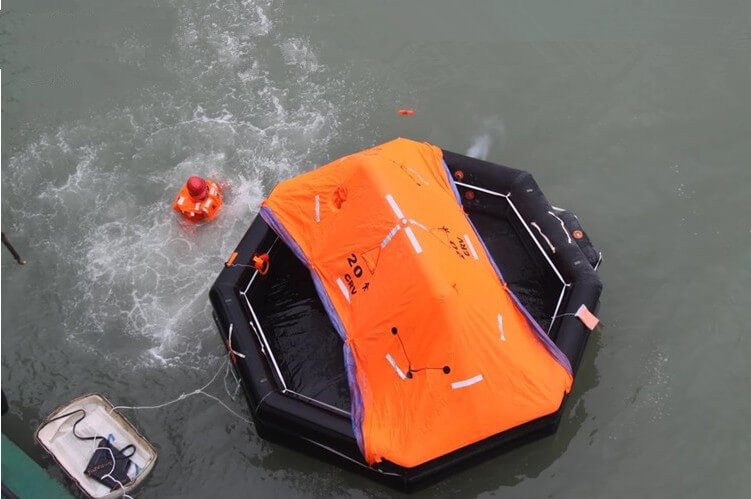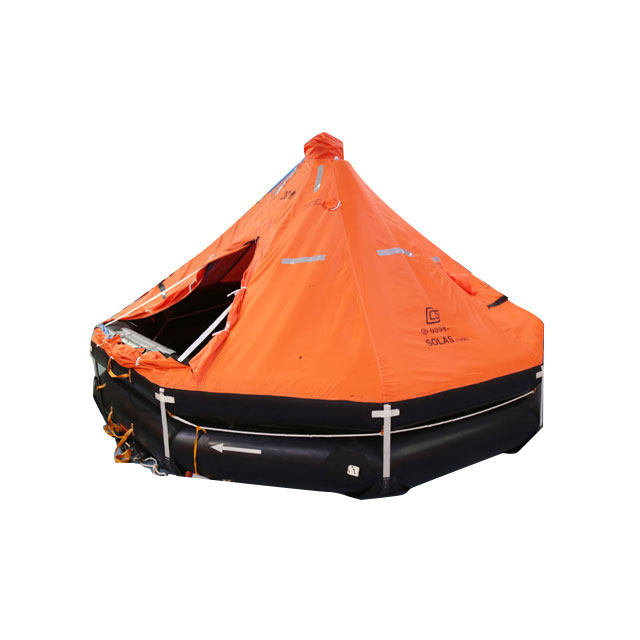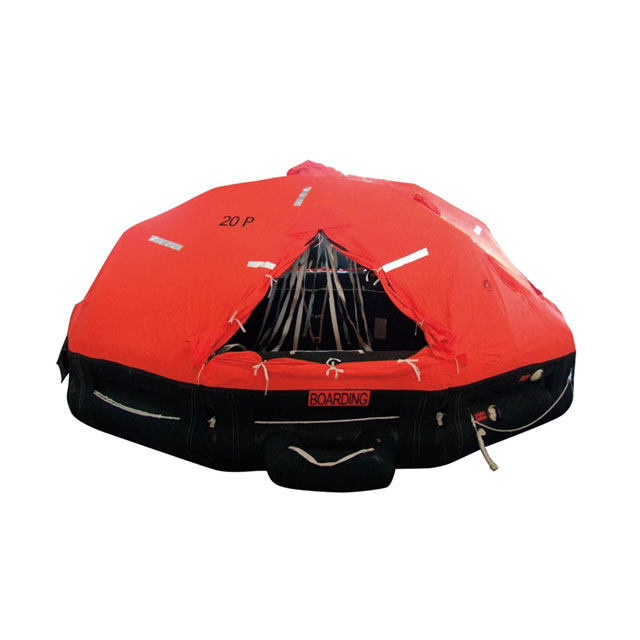Inflatable life rafts stand as vital components of maritime safety, serving as reliable means of survival during emergencies at sea. As technology and engineering progress, various types of inflatable life rafts have emerged, each tailored to specific needs and scenarios. This article explores the diverse world of inflatable life rafts, examining their types, features, and key considerations for selecting the most suitable option to enhance maritime safety.

Common Types of Inflatable Life Rafts
Throw-Overboard Inflatable Life Rafts
Design: Designed to be thrown into the water by hand.
Activation: Automatically inflates upon immersion or can be manually activated.
Use: Common on smaller vessels with limited deck space.
Davit-Launched Inflatable Life Rafts
Design: Installed on the ship’s deck in a cradle and launched using davit systems.
Activation: Can be launched manually or hydrostatically.
Use: Davit launched inflatable life rafts commonly used on larger vessels where deck space is at a premium or for vessels adhering to specific safety regulations.

Canister-Packed Inflatable Life Rafts
Design: Housed in a rigid canister, secured on the ship’s deck or deckhouse.
Activation: Released and inflated manually or automatically upon immersion.
Use: Versatile and suitable for various vessel types, providing protection from environmental elements during inflation.
Valise-Packed Inflatable Life Rafts
Design: Compact and versatile, comes in a soft valise for easy storage.
Activation: Manually launched and inflated upon immersion.
Use: Lightweight and easily deployable, ideal for vessels with limited storage space.
Reversible Inflatable Life Rafts
Design: Opens at the top, allowing for easy boarding from the water.
Capacity: Allows for a larger number of people, facilitating faster and more efficient evacuation.
Use: Suitable for calm sea conditions and scenarios requiring rapid deployment.

Self-Righting Inflatable Life Rafts
Design: Includes a self-righting mechanism to keep the raft upright in the water.
Stability: Increased stability in rough seas, lowering the risk of capsize.
Use: Ideal for vessels navigating in unpredictable and difficult waters.
Aviation Inflatable Life Rafts
Design: Specifically designed for aircraft emergencies over water, compact and lightweight.
Portability: Easily stowed on aircraft and inflated manually or automatically upon ditching.
Use: Essential for flights over water bodies, ensuring the safety of passengers and crew in aviation emergencies.
Offshore Inflatable Life Rafts
Design: Designed for extended survival at sea, often equipped with additional features for long-term use.
Capacity: Typically larger and capable of sustaining occupants for an extended duration.
Use: Ideal for offshore vessels and long-distance voyages where rescue may take more time.
Coastal Inflatable Life Rafts
Design: Suitable for coastal waters and shorter voyages.
Compact: Generally smaller and more compact than offshore rafts.
Use: Designed for vessels operating in areas with easy access to rescue services.
Inflatable Life Rafts with Canopy
Design: Equipped with a canopy or cover to provide protection from the elements.
Shelter: Enhances survival chances in adverse weather conditions.
Use: Recommended for vessels operating in regions with unpredictable weather.

Key Factors for Choosing a Suitable Inflatable Life Raft
Selecting the right inflatable life raft is a critical decision with a significant impact on maritime safety. Consider the following factors to ensure the chosen life raft is well-suited to the vessel’s specific needs:
Vessel Type and Size:
Consider the vessel’s size, type, and stability to determine the most suitable life raft type.
Occupancy Capacity:
Determine the number of people the life raft must accommodate, considering both passengers and crew.
Operating Environment:
Evaluate typical sea conditions and climate to choose a life raft that can withstand the vessel’s operating environment.
Regulatory Compliance:
Verify that the selected life raft complies with international maritime safety regulations and standards.
Deployment Method:
Evaluate the deployment method that best suits the vessel’s needs and available equipment.
Stowage Space:
Consider the available space for stowing the life raft on the vessel.
Inflation Mechanism:
Examine the inflation mechanism, whether automatic or manual, and its reliability.
Additional Features:
Explore features such as canopies, survival equipment, and signaling devices to enhance the life raft’s functionality.
Maintenance and Inspection:
Consider the maintenance and inspection requirements to ensure the life raft’s proper operation.
Training and Familiarization:
Ascertain that the vessel’s crew is adequately trained in the deployment and use of the chosen life raft.
Conclusion
As inflatable life rafts continue to evolve, the maritime industry benefits from improved safety standards. The selection of the best inflatable life raft requires a thoughtful analysis of vessel specifications, operating conditions, and safety regulations. Embracing technological advancements in inflatable life raft design enhances the chances of survival during emergency situations at sea, contributing to a safer maritime environment for all.


